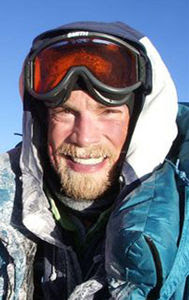 Everyday, climbers inquire about thinly covered crevasses, glacier conditions, or that “bergschrund” on top of the Emmons. And we’re here to share what we know about the Emmons, Kautz, Tahoma and other major glaciers on Mount Rainier. But we also wanted to let you know that the NPS is actively monitoring these glaciers in an effort to better understand how the climate is affecting them and how these glaciers are affecting the mountain and the surrounding areas. This is important stuff when you consider that Mount Rainier’s glaciers are a primary water source for many Washingtonians, while at the same time a potential geological threat to communities in the floodplains downstream.
Everyday, climbers inquire about thinly covered crevasses, glacier conditions, or that “bergschrund” on top of the Emmons. And we’re here to share what we know about the Emmons, Kautz, Tahoma and other major glaciers on Mount Rainier. But we also wanted to let you know that the NPS is actively monitoring these glaciers in an effort to better understand how the climate is affecting them and how these glaciers are affecting the mountain and the surrounding areas. This is important stuff when you consider that Mount Rainier’s glaciers are a primary water source for many Washingtonians, while at the same time a potential geological threat to communities in the floodplains downstream.Basic Science Recap: Glaciers are permanent sheets of flowing ice that erode mountain slopes, carve valleys, and affect the geography of the park. Rainier’s glaciers have an “accumulation zone” (where more snow gathers than melts) and an “ablation zone” (where more snow melts than accumulates). The most recent detailed measurements (1913 to 1994) on Mount Rainier indicate that the combined glacial area has receded by a 1/5th, and that the total volume of glacier mass has decreased by 25%.
The Nisqually and Emmons are part of a long-term monitoring program making them the most scientifically prodded glaciers in the park. The current study is a cooperative venture between Mount Rainier and North Cascades National Parks and includes field measurements of snow depth, snow density, and snow/ice melt. It includes an annual series of terrestrial, aerial and satellite images. To better understand what's going on, researchers place “ablation sticks” (PVC poles) at various elevations and locations on the Emmons, Ingraham and Nisqually Glaciers. In the spring, researchers us a steam drill to sink these stakes into the winter snowpack until they reach the glacier ice. Then throughout the season, researchers measure the snow accumulation and more importantly, the rate of snow melt. This allows them to calculate the net balance of the overall snow and icepack. The graph below shows the results gathered since 2003. As you can see, the overall mass balance of the ice is decreasing.
 So why are we sharing this geeky science information? Well, we like it, but also because climbers have been noting the PVC poles buried on the glacier and have asked, “What’s the plastic pipe all about?” Those PVC poles are the measuring sticks. If you keep your eyes peeled on your next summit attempt, you may note one or two of them on the Muir Snowfield, Nisqually, Emmons, or Ingraham Glaciers. If you do see them, please do not disturb or remove them.
So why are we sharing this geeky science information? Well, we like it, but also because climbers have been noting the PVC poles buried on the glacier and have asked, “What’s the plastic pipe all about?” Those PVC poles are the measuring sticks. If you keep your eyes peeled on your next summit attempt, you may note one or two of them on the Muir Snowfield, Nisqually, Emmons, or Ingraham Glaciers. If you do see them, please do not disturb or remove them. For more information on the glacier monitoring being conducted by North Cascades National Park, check their website. And if you’re interested in the historical Mount Rainier glacier studies referenced above, check out the “Glacier and Glacier Changes” homepage on the Mount Rainier website.
Photo contributed and graph by North Cascades researcher Jeanne Wenger.



